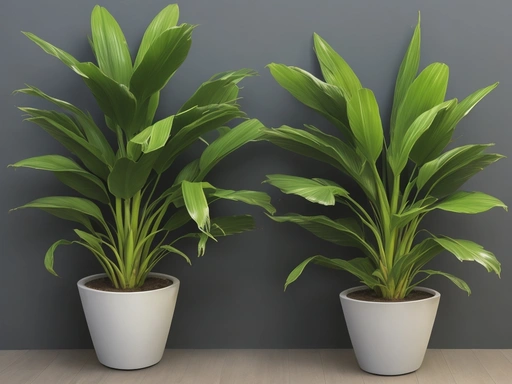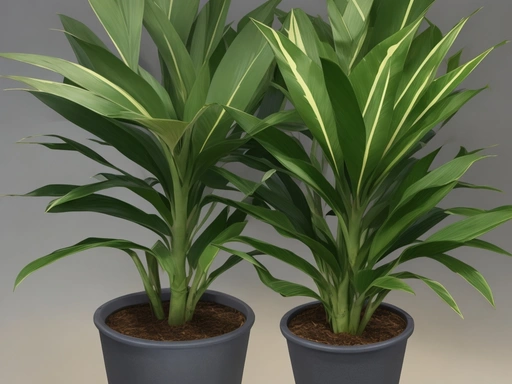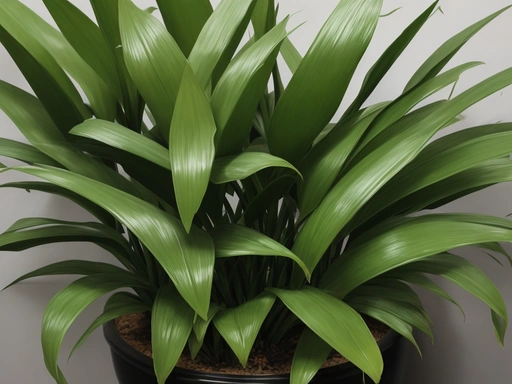Can Dracaena Plants Survive In Low Humidity?
Key Takeaways:
- Dracaena plants can survive in low humidity, but they may experience slower growth and potential leaf browning.
- Providing regular misting or using a humidifier can help to create a more favorable environment for dracaena plants in low humidity.
- Dracaena plants are adaptable and can tolerate a wide range of humidity levels, making them suitable for various indoor environments.
- Regular watering and avoiding overwatering are essential to maintaining the health of dracaena plants in low humidity conditions.
Have you ever wondered if your beloved Dracaena plants can survive in low humidity?
Well, I’ve got some fascinating insights for you.
Dracaena plants are not just beautiful to look at, but they also possess some astonishing resilience.
In this article, we’ll dive deep into the world of Dracaena plants and explore how low humidity affects their survival.
From understanding the role of humidity in plant health to uncovering the negative effects of low humidity on Dracaena plants, we’ll cover it all.
So, hang tight, plant lovers, because I’ve got some fantastic techniques to help your Dracaena plants thrive even in low humidity environments.
Let’s get started!
| Low Humidity | High Humidity | |
|---|---|---|
| Watering Needs | Require less frequent watering | Require more frequent watering |
| Air Moisture | May struggle to maintain optimal moisture levels | Tend to be happier and thrive in high humidity |
| Leaf Tips | May turn brown or crispy in low humidity | Tend to have healthier and greener leaf tips |
| Growth and Development | May grow slower and show signs of stress | Generally show faster growth and healthier appearance |
| Prevention of Diseases | More susceptible to pests and diseases | Less susceptible to pests and diseases |
What is a Dracaena Plant?
Dracaena plants are a type of popular houseplant known for their vibrant foliage and easy care requirements.
An Introduction to Dracaena Plants
Dracaena plants are popular houseplants known for their tall, slender stalks and lush, green leaves.
They come in various species, all of which are relatively low-maintenance and can thrive in different lighting conditions.
Dracaena plants are not only aesthetically pleasing but also have the added benefit of improving indoor air quality by removing toxins.
They are a great choice for beginners and can add a touch of natural beauty to any home or office space.
Understanding Humidity and its Importance for Plants
Humidity plays a vital role in maintaining plant health and well-being.
The Role of Humidity in Plant Health
Humidity plays a vital role in maintaining plant health. It affects various aspects of a plant’s life, including transpiration, nutrient uptake, and disease prevention.
Adequate humidity helps plants regulate their temperature, prevents wilting, and promotes healthy growth.
Insufficient humidity can lead to stress, stunted growth, leaf discoloration, and increased susceptibility to pests and diseases. Therefore, maintaining optimal humidity levels is crucial for the overall health and well-being of plants.
How Does Low Humidity Affect Dracaena Plants?
Low humidity can have negative effects on Dracaena plants, impacting their overall health and vitality.
The Negative effects of Low Humidity on Dracaena Plants
Low humidity can have negative effects on Dracaena plants. It can lead to dry soil, which hinders nutrient uptake and stunts growth.
It also causes brown and crispy leaf tips, wilting, and overall weakened health.
Low humidity can make plants more susceptible to pests and diseases as well. Proper humidity levels are crucial for the well-being of Dracaena plants.

Can Dracaena Plants Survive in Low Humidity?
Dracaena plants can survive in low humidity, but they may require extra care.
Factors Affecting Dracaena Plants’ Survival in Low Humidity
Factors Affecting Dracaena Plants’ Survival in Low Humidity:
- Dracaena species: Some species, like Dracaena marginata, are more tolerant of low humidity than others. Choose species that are better suited to drier environments.
- Plant size and age: Younger and smaller Dracaena plants are more susceptible to low humidity stress. Larger, more established plants generally have a better chance of surviving in low humidity.
- Environmental conditions: Factors such as temperature, air circulation, and light intensity can affect humidity levels. In low humidity environments, high temperatures and strong air currents can worsen the situation for Dracaena plants.
- Watering practices: Overwatering can lead to root rot, while underwatering can cause dehydration. Finding the right balance and ensuring proper drainage is crucial for Dracaena plants to withstand low humidity.
- Care and maintenance: Regular dusting of the leaves, avoiding drafts, and placing the plant away from heating or cooling vents can help minimize stress caused by low humidity. Additionally, providing adequate nutrients and maintaining a healthy soil pH can boost plant resilience.
Techniques to Help Dracaena Plants Thrive in Low Humidity Environments
To help Dracaena plants thrive in low humidity environments, you can take a few simple steps. First, you can place a humidifier near your plants to increase the moisture in the air.
Another option is to group your plants together, creating a microclimate that can help retain humidity.
You can also mist your plants regularly or place a tray of water near them to provide some moisture. Lastly, avoid placing your plants near heat sources or drafts, as these can further dry out the air.
Tips for Maintaining Optimal Humidity Levels for Dracaena Plants
Maintaining the right humidity levels is essential for the well-being of your Dracaena plants. Here are some tips to help you achieve optimal humidity for them.
How to Increase Humidity for Dracaena Plants
To increase humidity for Dracaena plants, you can try these methods:
- Grouping plants together: Placing multiple plants close to each other helps create a microclimate with higher humidity.
- Using a humidifier: Adding a humidifier near your plants can effectively increase the moisture in the air.
- Misting the leaves: Regularly misting the leaves with water helps raise humidity levels temporarily.
- Using a pebble tray: Placing a tray filled with water and pebbles near the plants allows for slow evaporation, increasing humidity.
- Avoiding airflow: Keep your Dracaena away from drafty areas or air vents, as this can lower humidity levels.
By incorporating these methods, you can help create a more suitable environment for your Dracaena plants to thrive.
Other Tips for Maintaining Humidity Levels
To maintain humidity levels for your Dracaena plants, consider the following tips:
- Grouping plants together: By grouping plants, they create a microclimate that traps moisture and increases humidity.
- Using a humidity tray: Place a tray filled with water underneath the plants to increase humidity as the water evaporates.
- Misting the leaves: Spraying the leaves with water regularly helps increase humidity directly around the plant.
- Using a humidifier: A humidifier can effectively increase humidity levels in the entire room or area where the plants are located.
- Avoiding direct airflow: Keep your plants away from drafts or sources of direct airflow as this can dry out the air and decrease humidity levels.
- Using a pebble tray: Place a tray filled with water and pebbles underneath the plants. The water evaporating from the tray increases humidity around the plants.
Signs of Stress or Damage in Dracaena Plants Due to Low Humidity
Low humidity stress in Dracaena plants can lead to visible signs of damage such as yellowing leaves, brown leaf tips, and wilting.
Recognizing Common Signs of Low Humidity Stress in Dracaena Plants
Low humidity stress in Dracaena plants can be recognized through various signs.
Look out for dry or brown leaf tips, yellowing leaves, curling or wilting foliage, and leaf drop.
Stunted growth, browning leaf edges, and a general decline in overall plant health are also indicators of low humidity stress in Dracaena plants.
Steps to Restore Health and Potential Recovery in Dracaena Plants
To restore health and potential recovery in Dracaena plants, it’s important to take a few key steps. Firstly, make sure the plants are placed in an environment with optimal humidity levels.
Secondly, increase humidity levels by using a humidifier or placing a tray of water nearby.
Thirdly, mist the leaves regularly to provide additional moisture. Lastly, ensure the plants are receiving adequate sunlight and nutrient-rich soil for overall health.
Remember to monitor the plants closely and make adjustments as needed.

Frequently Asked Questions about Dracaena Plants and Low Humidity
Can Dracaena plants tolerate low humidity levels?
Yes, Dracaena plants can tolerate low humidity levels to some extent.
However, excessively low humidity can have negative effects on their overall health and appearance.
It is important to provide optimal humidity levels and take steps to increase humidity when necessary to ensure the well-being of your Dracaena plants.

What are the ideal humidity levels for Dracaena plants?
The ideal humidity levels for Dracaena plants range between 40% to 60%.
This range provides enough moisture for their foliage without causing issues like root rot or fungal diseases.
It’s best to avoid extremely dry conditions or excessively high humidity, as both can negatively affect the health of your Dracaena plants.
How often should I mist or water my Dracaena plants in low humidity?
In low humidity, you should mist or water your Dracaena plants approximately once or twice a week. This will help to increase the moisture around the plants and prevent them from drying out.
Additionally, placing a tray of water near the plants can also help to raise the humidity levels.
Keep an eye on the soil moisture and adjust the watering frequency accordingly.

Are there any additional measures to be taken in low humidity environments?
To help Dracaena plants thrive in low humidity environments, there are a few additional measures you can take:
- Use a humidifier: Adding a humidifier to the room can help maintain optimal humidity levels for your Dracaena plants.
- Group plants together: Grouping plants together can create a microclimate that helps increase humidity around them.
- Use pebble trays: Placing your plants on trays filled with water and pebbles can create a humid environment as the water evaporates.
- Mist your plants: Regularly misting your Dracaena plants with water can provide them with the moisture they need.
- Avoid direct airflow: Keep your plants away from sources of direct airflow, such as air conditioning vents or fans, as these can dry out the air.
Remember, maintaining the right humidity levels is essential for the health and well-being of your Dracaena plants.
By incorporating these additional measures, you can help them thrive in low humidity environments.
Can Dracaena plants recover from severe damage caused by low humidity?
Yes, Dracaena plants can recover from severe damage caused by low humidity. With proper care and attention, they have the ability to bounce back and regain their health.
Providing them with adequate moisture, adjusting the humidity levels, and ensuring proper watering techniques can help in the recovery process.
It may take some time, but with patience and consistent care, Dracaena plants can indeed recover and thrive again.
Final Verdict
While Dracaena plants are not particularly tolerant of low humidity levels, they can still survive in such conditions with the right care and attention. The key is to understand the negative effects of low humidity on these plants and take appropriate measures to ensure their well-being.
By providing occasional misting, using a humidifier, grouping plants together, and maintaining a consistent watering schedule, you can create a more favorable environment for your Dracaena plants.
Additionally, promptly recognizing signs of stress and taking steps to restore their health can help these plants recover from damage caused by low humidity. With these techniques, you can help your Dracaena plants thrive even in less humid environments.






